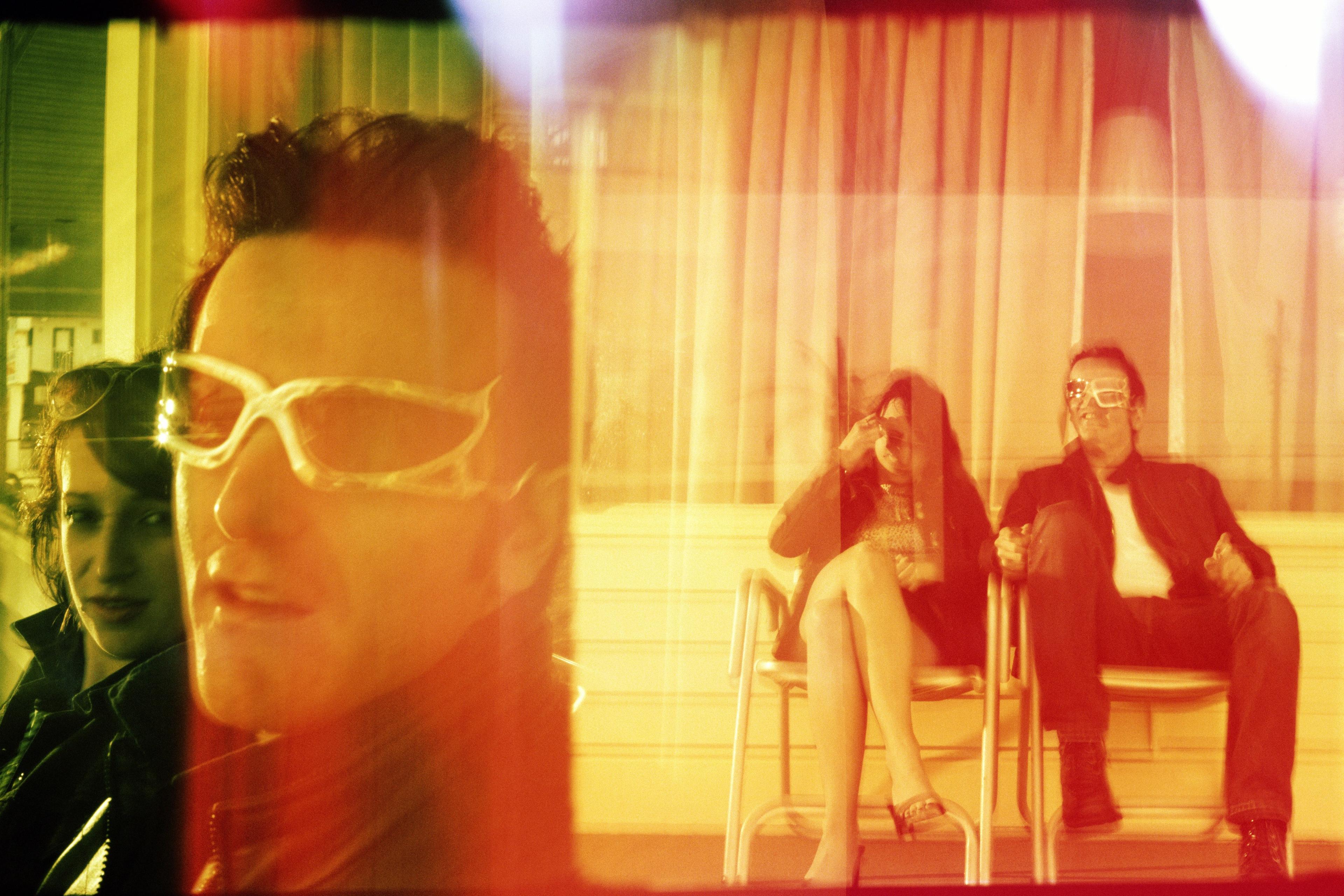There are two pathways in any psychedelic experience. Albert Hoffman, the Swiss chemist who discovered LSD in 1943, travelled both. One path can lead toward positive feelings of unity, bliss and wholeness – experiences that Hoffman described as ‘remarkable’, in which everything ‘glistened and sparkled in a fresh light’. The other path can lead to transformations that are remarkable for very different reasons, as Hoffman wrote in LSD: My Problem Child (1979):
Every exertion of my will, every attempt to put an end to the disintegration of the outer world and the dissolution of my ego, seemed so much wasted effort. A demon had invaded me, had taken possession of my body, mind, and soul … I was seized by the dreadful fear of going insane. I was taken to another world, another place, another time. My body seemed to be without sensation, lifeless, strange.
The experience of ego dissolution was so horrifying that Hoffman wondered if he was dying. The difference between the two paths, he decided, was dose: the ‘demon’ seemed to appear only after taking too much LSD. But since that fateful day in 1943, a mountain of (anecdotal) evidence has grown suggesting that the experience of ‘dying’ involves much more than dose, or fear. This research indicates that both paths may arrive at the same destination. And, what’s more, these experiences – even when horrifying – can be surprisingly beneficial.
Understanding the neurochemical basis of ego death is essential as we enter the so-called psychedelics renaissance. Once shamed and stigmatised, substances like LSD and psilocybin (found in ‘magic’ mushrooms) are now being investigated in research centres and hospitals around the world as treatments for depression, anorexia, pain and other problems. These substances can be powerful. They can induce a range of different effects, including amplifying emotional states, altering visual perception, and even producing closed-eye visual hallucinations. They can also induce transient distortions in the subjective experience of one’s sense of self. And, unlike other effects, these distortions may be particularly important if researchers hope to unlock the therapeutic potential of psychedelics.
When describing the effects of these drugs, people sometimes talk about ‘losing themselves’ or ‘being at one with the Universe’, and claim to experience unique life-changing insights. These impressions (or distortions) are widely known as ‘ego death’ or ‘ego dissolution’. But what is it that gets dissolved?
The branch of psychology known as ‘psychodynamics’ is a good place to start if we want to understand the transformations that can take place through psychedelics. Psychodynamic theories understand the ego as a construct, a theoretical way to explain how the mind works. The ego refers to the way we behave and the choices we make, based on our needs and our personality: do we mostly act defensively, aggressively, or do we go with the flow? The related concept of the self, on the other hand, is what differentiates us from others, and is how we adjust to constant changes. It is the contact we make within an ever-changing world and how we experience this contact. From that perspective, the self is best understood as a process, and ego as a function of it.
Our egos can be flexible or inflexible. We encounter this when we experience ourselves either being spontaneous and full of vitality, or becoming stagnant (and inflexible), which can lead to anxiety, depression and other psychopathological symptoms. A psychedelic trip can interrupt this inflexibility. By destabilising the established ways we experience the world, psychedelics teach us that we can be different, too. We are not at the mercy of our fate. We can feel and act in new ways. We have just forgotten this fluidity along the way.
But how do psychedelic drugs induce this (ego) flexibility when our brain is anatomically fixed? This is one of the many longstanding questions in the newly revived field of psychedelic research, where scientists are administering psychedelics to participants and seeing how these drugs disrupt brain activity.
Understanding the brain as a set of networks, as these scientists do, is one way of understanding how ‘ego death’ operates. Brain networks are sets of interconnected brain regions that work together to perform a function. There are brain networks that sustain attentional processes, visual processes, and so on. When under the influence of a psychedelic, the strength of connectivity within each network tends to decrease, whereas the strength of connectivity between the networks increases. That is, brain regions that normally function together do so less, and instead start ‘talking’ with different regions.
So where do we start looking for evidence of ‘ego death’? One brain network that is disrupted during psychedelic experiences is the default mode network (DMN). The DMN is a set of interconnected regions in the brain that has become almost synonymous with self-referential thinking, including autobiographical memory recall, mind wandering, planning, and rumination. It is the ‘default’ mode of our brains, which becomes active when we’re not actively processing the outside world. As such, this brain network seems a logical target when assessing how psychedelic drugs may dissolve our sense of self. Changes in the DMN seem to correlate with the psychedelic-induced ego dissolution in some studies, but not all. It might appear that the dissolution of the self is related to the dissolution of the DMN. However, non-psychedelic drugs, such as amphetamines and alcohol – often accompanied with an inflated ego – have also been found to reduce the integrity of the DMN. In that respect, the idea that ‘dissolving’ your DMN results in a dissolution of the self is too simplistic. Instead, the answer may not relate to whether psychedelics disintegrate certain networks, but how they change brain networks.
Recent work has attempted to assess the underlying neurochemicals that may be driving large-scale brain network changes during psychedelic experiences. Until now, research on psychedelic drugs has focused on the serotonin receptors that these substances stick to (especially the serotonin 5-HT2A receptor, which regulates mood, sleep and perception). Once a psychedelic substance has activated these receptors, a cascade of neurochemical signalling begins, which leads to altered levels of two important neurotransmitters: glutamate and GABA. These are our brains’ two key excitatory and inhibitory neurotransmitters, respectively. Excitatory neurotransmitters stimulate (or ‘excite’) nerve cells in the brain, while inhibitory neurotransmitters suppress (or ‘inhibit’) those same cells. It has been suggested that these two neurochemicals act in synchrony throughout the brain, creating a balance of excitatory and inhibitory activity that promotes normal brain network functioning. However, during a psychedelic trip, this neurochemical balance is off, resulting in a breakdown of normal brain network functioning. Psychedelic substances don’t change the anatomical connections in the brain, they introduce flexibility (neurochemically) into the networks. But which specific part of the system accounts for ego dissolution?
We recently investigated this exact question. Our research team looked at neurotransmitters in the DMN of people who had taken psilocybin. We found that excitatory and inhibitory neurotransmitter concentrations were altered in multiple regions, each of which related in a unique way to the experience of ego dissolution. Among those in the study who reported feelings of unity, bliss and ‘oneness’ with the Universe (aspects of positively experienced ego dissolution), our researchers found a reduction of excitatory glutamate in the hippocampus. However, among those who reported feelings of anxiety and a fear of losing control (aspects of negatively experienced ego dissolution), researchers found an increase of glutamate in the medial prefrontal cortex. So, what does all this mean?
Embedded deep in the temporal lobe, the hippocampus is generally thought of as the ‘memory centre’. This ‘centre’ encompasses multiple memory processes, but one that we believe could be important in relation to ego dissolution is autobiographical memory – our personal memories, based on a recollection of life events. As psilocybin disrupts the function of glutamate in this region, the normal neurochemical balance changes. This may lead to a decoupling of the hippocampus from normal brain network functioning (and the DMN), inducing a temporary loss of access to autobiographical information. This results in a breakdown of personal identity. People who experience this breakdown may feel unity or oneness with everything because, for a short amount of time, they no longer have access to memories of themselves as a singular, separate individual. This breakdown can also be frightening and unnatural, resulting in feelings of anxiety, paranoia and heightened arousal.
These unpleasant experiences seem to be related to a different part of the brain: the medial prefrontal cortex. Located just behind the forehead, the medial prefrontal cortex is a subset of neurons in the prefrontal cortex, a large and complex brain region connected to multiple brain networks. The medial prefrontal cortex has been linked to processes such as decision-making, conflict monitoring and executive control. Psilocybin also disrupts the balance between excitatory and inhibitory neurochemicals in this region, like it did to the hippocampus, disconnecting the DMN and potentially other brain networks. We found that more excitatory activity within this area was related to an increase in anxiety. This increase in glutamate in the medial prefrontal cortex could reflect a person’s increasing effort to gain control and reinstate their waning autobiographical self. In other words, a person fears the new flexibility in the system and, instead of letting go, they fight. This may explain why people taking psychedelic substances often say it’s important to ‘let go’, to surrender to the experience.
Understanding the mechanics of these transformative experiences is essential in our search to understand the therapeutic potential of psychedelics. It seems that these substances alter the neurochemical balance that orchestrates the function of networks like the DMN – large-scale brain networks that interact to produce what we call an ‘ego’. Studying the multiple regions that contribute to these networks, we can begin establishing which regions contribute most to ego dissolution. But there is a lot we don’t know.
If we’re interested in the therapeutic potential of these drugs, in addition to asking how ‘ego death’ works, we should also ask whether this experience is truly important to positive outcomes in patients. Does it help depression, ease anxieties and address other problems? Some researchers, such as David Yaden and Roland Griffiths, have taken a strong position, arguing that psychedelics will have positive and enduring therapeutic effects on mental health only if the person taking them experiences ego death (or a related mystical experience). Clinical studies have shown that positive psychedelic experiences can indeed ease smoking cravings, depression and anxiety. And feelings of ego death during psychedelic experiences may increase psychological flexibility when coping with day-to-day stressors. However, there’s also evidence to the contrary: one study showed that low doses of a psychedelic (so low it did not produce a noticeable psychedelic effect or feelings related to ‘ego death’) still produced a beneficial clinical response, specifically for treating pain. In some cases, psychedelic experiences may even worsen a mental health condition, especially in persons with personality disorders and schizophrenia. So, how important is ego death for psychedelic therapies? The answer is: it’s complicated.
The good news is that ego death (and the psychological shifts that accompany it) can help psychopathological conditions in which rigid thinking is a core characteristic, such as depression, OCD, anxiety, addiction and eating disorders. For those who experience these conditions, psychedelic substances seem to encourage personal insights into behavioural patterns, potentially triggering a change in behaviour or beliefs. It’s likely that the ‘ego death’ caused by psychedelics could become an important cornerstone of psychedelic therapy, whether it involves Hoffman’s ‘remarkable’ feelings of oneness – or the terror, as Michael Pollan describes it in his book How to Change Your Mind (2018), of being ‘like one of those flimsy wooden houses erected on Bikini Atoll to be blown up in the nuclear tests … blasted to a confetti cloud by an explosive force.’ As the self is annihilated, flexibility may return to our brain. And in the aftermath, we may even learn to form ourselves anew in the ever-changing churn of the world.








